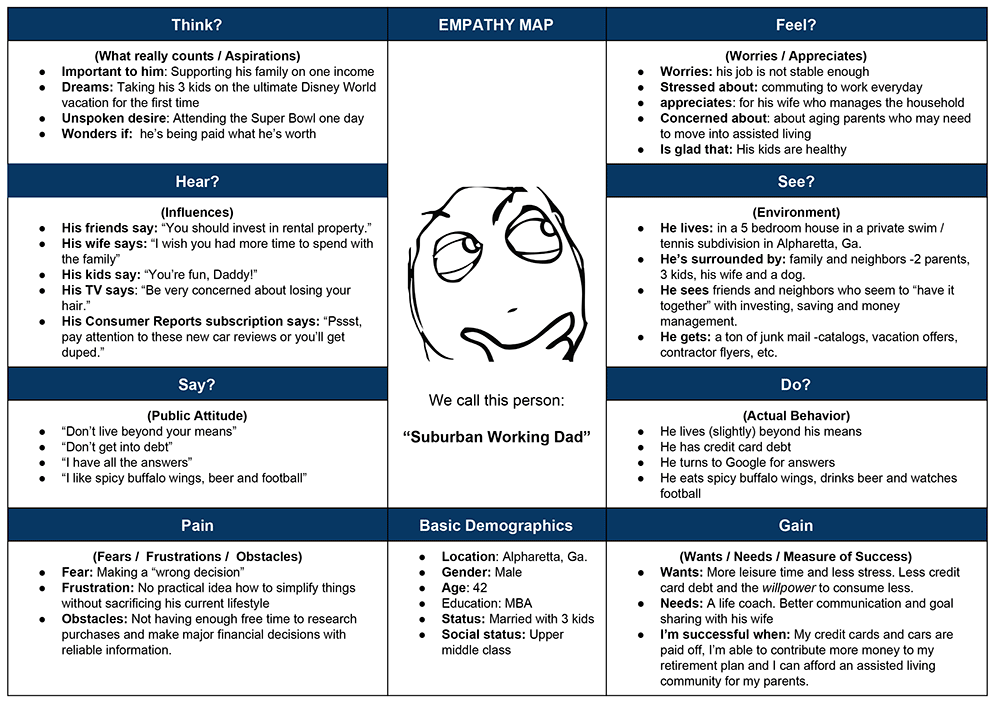
Who Is Your Audience?
Understanding your audience is a key component in deciding what kind of content you serve and how you serve it. Sometimes it’s not always obvious, and other times your audience may shift.
Companies with large budgets often hire market research firms to create personas for their business. They use empirical research (data-based) by conducting usability testing, surveys, analytics, field studies and interviews.
You don’t have to hire a large market research company to do your own nonempirical research (assumption-based.) Take advantage of existing knowledge to benefit from a user-centered focus on content. As long as your nonempirical research is built on real cases, consumers or readers, you can have some success at creating your own personas for your agency.
Basic Demographics
For basic demographic research on the people who visit your site, you can use Google Analytics. Google Analytics offers some general information about the visitors on your site, including:
- Age
- Gender
- Location / City
- (As a state agency, your audience ideally lives in Georgia or plans on moving to Georgia.)
- Interests
Read more about how Google acquires demographic data on Google’s support page.
Other basic demographic data about your readers (should you take an educated guess) may include:
- Lifestyle
- Education
- Household Income
Have Empathy For Your Audience
Once you have a basic idea of your audience’s demographic, dig a little deeper to get in their head. One simple tool to capture a persona snapshot is called an empathy map. An empathy map is designed to help you predict a person’s needs based on how they think and feel, what they see and hear and ultimately, what they say and do (Be aware that what people say and actually do is often different.)

Humans are complicated. While you can’t expect to peg a “type” exactly, you can certainly get a big picture of common situations shared by thousands of people. Use this Empathy Map Template to create as many personas as you need based on the users you already know and have visiting your site.
As you create personas for user groups, think about the following:
What Does Your Audience Value (and Fear?)
On Consumer Ed’s site, people are posting questions based on what they value and fear. Take a look at the kinds of questions consumers ask when they contact you and sort them into groups. For example: John Doe posted a question about who is liable for fraudulent transactions using credit cards with the new chip and pin technology. John values his security and may be fearful of theft or identity theft. Jane Doe posted a question about grocery stores selling expired food products. Jane values her health and may be fearful of getting sick.
What Does Your Audience Want?
Based on values and fears that govern most human decisions, everyone has a problem they are trying to fix. All your readers have a story and a problem, and your job is to provide content that delivers a solution. Based on your various personas, aim to discover what answers your user groups seek.